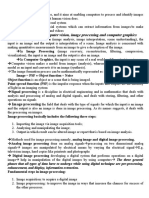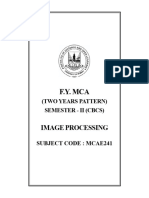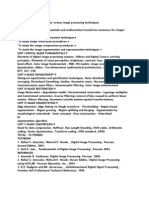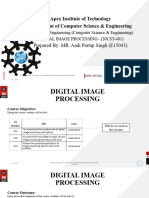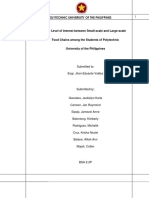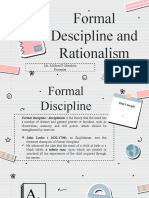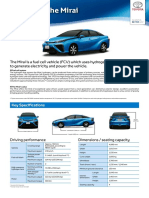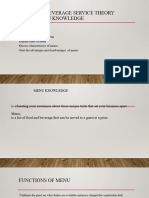0% found this document useful (0 votes)
57 views3 pagesCEC366 UNIT1 Image Processing
The document outlines the fundamentals of digital image processing, detailing the steps involved such as image acquisition, preprocessing, segmentation, and recognition. It discusses components of an image processing system, elements of visual perception, and relationships between pixels. Additionally, it covers color image fundamentals and mathematical concepts like 2D transforms essential for image processing techniques.
Uploaded by
feliciangeline.jCopyright
© © All Rights Reserved
We take content rights seriously. If you suspect this is your content, claim it here.
Available Formats
Download as DOCX, PDF, TXT or read online on Scribd
0% found this document useful (0 votes)
57 views3 pagesCEC366 UNIT1 Image Processing
The document outlines the fundamentals of digital image processing, detailing the steps involved such as image acquisition, preprocessing, segmentation, and recognition. It discusses components of an image processing system, elements of visual perception, and relationships between pixels. Additionally, it covers color image fundamentals and mathematical concepts like 2D transforms essential for image processing techniques.
Uploaded by
feliciangeline.jCopyright
© © All Rights Reserved
We take content rights seriously. If you suspect this is your content, claim it here.
Available Formats
Download as DOCX, PDF, TXT or read online on Scribd
/ 3
















